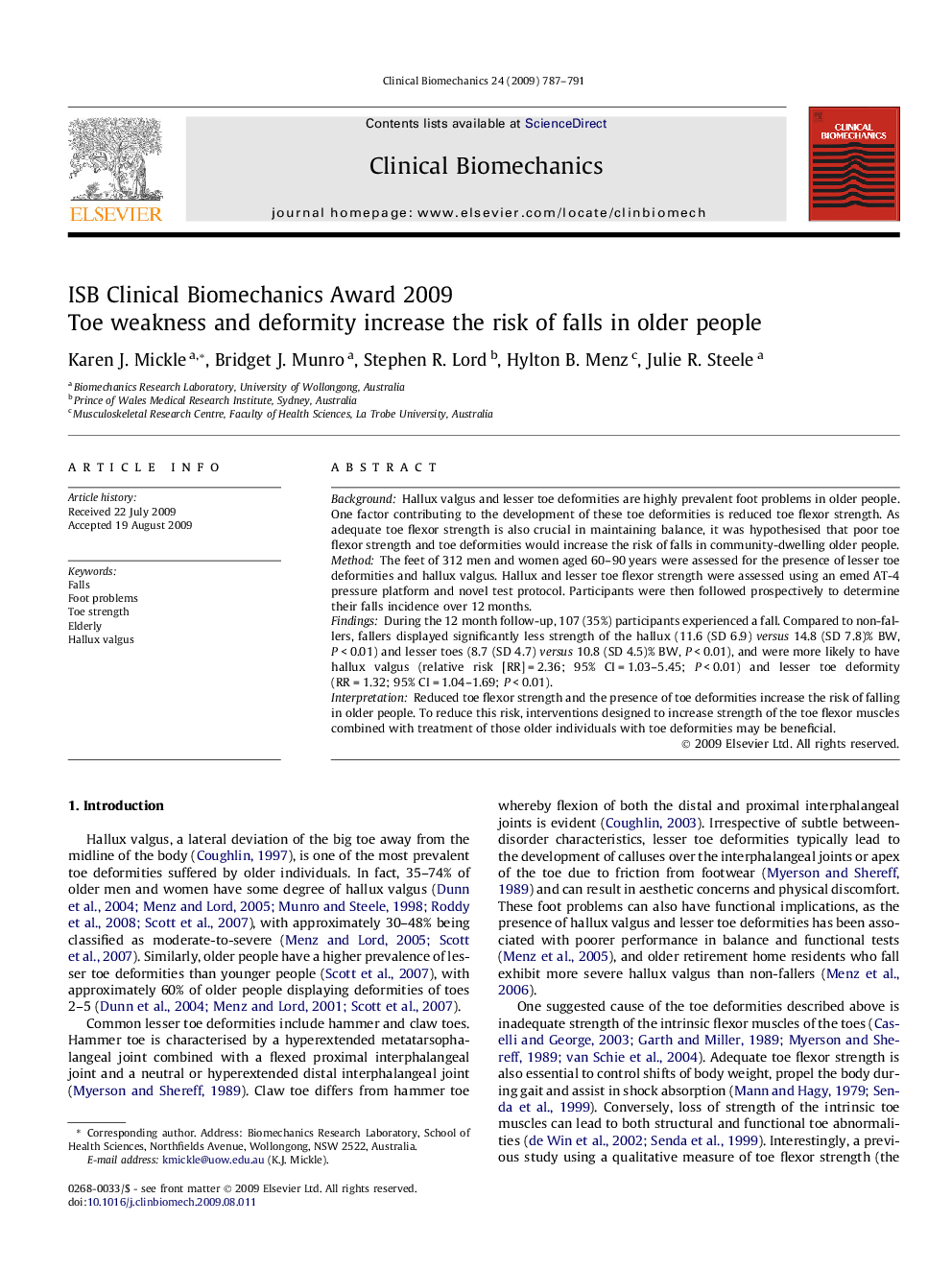| Article ID | Journal | Published Year | Pages | File Type |
|---|---|---|---|---|
| 4050674 | Clinical Biomechanics | 2009 | 5 Pages |
BackgroundHallux valgus and lesser toe deformities are highly prevalent foot problems in older people. One factor contributing to the development of these toe deformities is reduced toe flexor strength. As adequate toe flexor strength is also crucial in maintaining balance, it was hypothesised that poor toe flexor strength and toe deformities would increase the risk of falls in community-dwelling older people.MethodThe feet of 312 men and women aged 60–90 years were assessed for the presence of lesser toe deformities and hallux valgus. Hallux and lesser toe flexor strength were assessed using an emed AT-4 pressure platform and novel test protocol. Participants were then followed prospectively to determine their falls incidence over 12 months.FindingsDuring the 12 month follow-up, 107 (35%) participants experienced a fall. Compared to non-fallers, fallers displayed significantly less strength of the hallux (11.6 (SD 6.9) versus 14.8 (SD 7.8)% BW, P < 0.01) and lesser toes (8.7 (SD 4.7) versus 10.8 (SD 4.5)% BW, P < 0.01), and were more likely to have hallux valgus (relative risk [RR] = 2.36; 95% CI = 1.03–5.45; P < 0.01) and lesser toe deformity (RR = 1.32; 95% CI = 1.04–1.69; P < 0.01).InterpretationReduced toe flexor strength and the presence of toe deformities increase the risk of falling in older people. To reduce this risk, interventions designed to increase strength of the toe flexor muscles combined with treatment of those older individuals with toe deformities may be beneficial.
